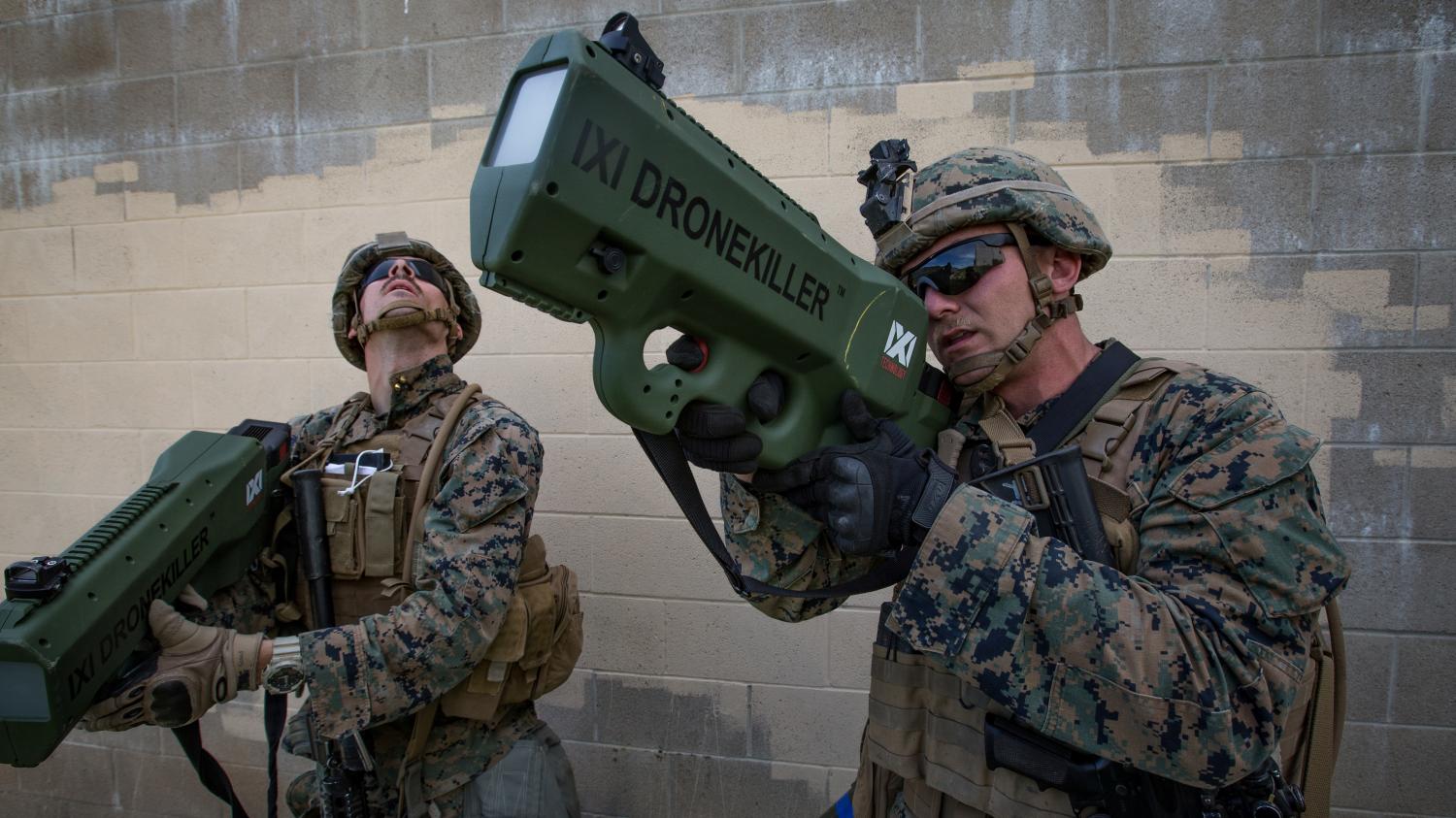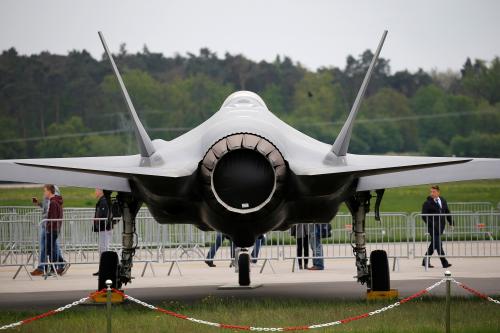Executive Summary
What changes are likely in military technology over the next 20 years? This question is fascinating on its own terms. More importantly, answering it is crucial for making appropriate changes in U.S. and allied weaponry, military operations, wartime preparations, and defense budget priorities. To be sure, technology is advancing fast in many realms. But it is not enough to wave one’s arms exuberantly about futuristic military possibilities. The stakes are too high. Defense resource decisions need to be based on concrete analysis that breaks down the categories of major military technological invention and innovation one by one and examines each. Presumably, those areas where things are changing fastest may warrant the most investment, as well as the most creative thinking about how to modify tactics and operational plans to exploit new opportunities (and mitigate new vulnerabilities that adversaries may develop as a result of these same likely advances). Building on the methodology employed in my earlier 2000 book, Technological Change and the Future of Warfare, and refined further in my recent paper, “A Retrospective on the So-Called Revolution in Military Affairs, 2000-2020,” this paper attempts to look two decades into the future to aid in this important task for American defense planners.
My working hypothesis is that 20 years is long enough to represent a true extrapolation into the future. Yet it is also short enough that existing trends in laboratory research can help us understand the future without indulging in rampant speculation. Since many defense systems take a couple of decades to develop, it should not be an overly daunting task to gauge how the world might look, in terms of deployable military technology, 20 years from now. This approach is not foolproof, as discussed in my forthcoming book, but if undertaken with the proper degree of acknowledged uncertainty, can still be quite useful.
This paper’s category-by-category examination of military technology employs the same basic framework that I developed in my book published in 2000, Technological Change and the Future of Warfare. The core of that book was an analysis of ongoing and likely future developments in 29 different types of military-related technologies. My goal was to attempt to determine in which areas the pace of change was likely to be revolutionary over the following 20 years, versus high or moderate. Revolutionary change is defined, notionally, as a type and pace of progress that renders obsolete old weapons, tactics, and operational approaches while making new ones possible. My methodology began with a focus on the foundational concepts of physics, to understand the limits of the possible. I also examined the scientific, engineering, and defense literature on various types of technological research, to understand what was likely to be developed over the 2000-2020 time period. Finally, armed with my own initial estimates of key trends in those 29 areas, I then consulted with experts, including at several of the nation’s major weapons laboratories, for their feedback and advice. With this research complete, I then argued in the book that in fact only two of the 29 categories of technology were likely to experience truly revolutionary change—and thus to create the potential for military revolution when combined with other kinds of available technologies as well as new operational and strategic concepts. Those two areas of predicted revolutionary advance were computer hardware and computer software.
As discussed further in my concurrent paper “A Retrospective on the So-Called Revolution in Military Affairs, 2000-2020,” I have subsequently concluded that I was right about computers but should have added robotics to the list of technologies likely to experience radical change (my earlier estimate, in 2000, forecast a “high” pace of change for robotics such as unmanned aerial vehicles, rather than radical or revolutionary progress). Notably, there are now some 20,000 unmanned vehicles of various types in the Department of Defense’s (DoD) inventory, and the various new uses to which they have been put during this century, from Iraq and Afghanistan to the broader Middle East and beyond, are remarkable. Enemy forces are increasingly using robotics, too.
I should have also underscored the degree to which progress in computers could create vulnerabilities, as nations increasingly utilized computer systems and software that created potentially gaping weaknesses in their military capabilities. This point proved important enough that in retrospect I should have given it special and separate emphasis. Thus, in my earlier taxonomy, I had one important area of technology where I underestimated the potential for revolutionary advancement, and another where I should have underscored additional dimensions of likely change.
In the earlier book, I also predicted that another seven categories of technology would likely witness high change—chemical sensors, biological sensors, radio communications, laser communications, radio-frequency weapons, nonlethal weapons, and biological weapons. The remaining 19 categories of key military technologies, many of them sensor technologies or major components of weapons platforms like ground combat vehicles, aircraft, ships, and rockets, seemed likely to advance at only modest or moderate rates. In my concurrent paper, I revisit these prognostications one by one. In general, the thrust of my estimates seems to have been mostly correct, though with a number of specific imperfections in which progress that I had forecast to be high or rapid proved to be only moderate, or vice versa. Crucially, however, putting aside robotics, I do not believe that any of the remaining 26 areas of technology did in fact undergo revolutionary change.
Two lessons emerge from this previous analysis. One, the approach I developed in the 2000 book appears useful. Assessing future trends in military technology by examining a number of fairly broad, yet also fairly specific and discrete areas of defense-related technology, and then integrating these individual findings into a broader framework for predicting future war, is valuable. This methodology discourages hyperbole based on cherry-picking areas of technology that may be most (or least) promising. It also helps to identify those specific technological enablers that are most likely to cause any radical change in broader military capabilities—to figure out what might drive a revolution in military affairs, should there be such a thing anytime soon.
Second, to the extent that there were flaws in my approach and my analysis, it is important to understand their origins, and attempt to take remedial action in any future prognostication. Most importantly, it was difficult to predict how military organizations would avail themselves of new technological opportunities—or, alternatively, to allow themselves to remain or become vulnerable in the face of new capabilities possessed by possible adversaries. In other words, the challenge was largely in predicting how entrepreneurial military organizations might, or might not, respond to transformational opportunities for better or worse.
In terms of robotics, U.S. military organizations responded with innovative and entrepreneurial acumen, creating new tactical methods to handle the challenges of complex counterinsurgency and counterterrorism operations. Other military organizations around the world have also made significant progress in this arena.
In regard to computers, however, modern militaries generally have not succeeded. Indeed, they carelessly allowed themselves to build Achilles’ heels into their own systems, as well as their supporting national civilian infrastructure that is often essential to the operations of modern military forces. Thus, they have potentially made the performance of future weapons less dependable than past ones had been. In other words, they may even have set themselves back, though it is impossible to know for sure at this point, since we have not seen the kind of interstate warfare among near-peer competitors that would probably be needed to assess the hypothesis accurately.
Those operating in the classified world may have a greater sense than I of the vulnerabilities and opportunities that the United States now faces due to cyber technology. But even they cannot be sure because cyber vulnerabilities are not static. They are always evolving in a game of measures and countermeasures, even faster than in other areas of military operations characterized by these kinds of dynamics, such as electronic warfare. In addition, the ripple effects of any cyberattack often cannot be easily foreseen even when specific vulnerabilities are understood. There may also be important path dependencies about how different types of failures might collectively affect a larger system. It is difficult to evaluate these possibilities by examining individual vulnerabilities alone.
It is not surprising that forecasting the future would be hardest when complex concepts are involved and when large military organizations are the key actors. Scientists can invent new capabilities in ways that are often partially projectable and foreseeable over a 20-year time horizon based on what is known about their present research activities as well as opportunities opened up by the state of modern science and engineering. However, when it comes to combining technologies into systems and operational concepts that can be instrumental in fighting wars, the human dimension of organizational performance, influenced by the external combat environment as well as domestic and bureaucratic politics, introduces new variables into the mix, as the writings of Stephen Rosen, Thomas Ehrhard, Barry Posen, Stephen Biddle, and others attest. The Revolution in Military Affairs (RMA) debate of the 1990s underscored the reality that, while technology can provide the raw materials for military revolutions, those revolutions must ultimately be sparked by entrepreneurship and organizational adaptation. This was true historically, as with the inventions or transformations of the blitzkrieg, integrated air defense, aircraft carrier operations, amphibious assault, anti-submarine warfare systems, and the atomic bomb in the 1930s and 1940s. It remains true today.
To preview the results of this paper, my overall assessment is that technological change of relevance to military innovation may be faster and more consequential in the next 20 years than it has proven to be over the last 20. Notably, it is entirely possible that the ongoing, rapid pace of computer innovation may make the next two decades more revolutionary than the last two. The dynamics in robotics and in cybersecurity discussed here may only intensify. They may be more fully exploited by modern military organizations. They will likely extend in important ways into the artificial intelligence (AI) realm as well. At least, an examination of the last 20 years would seem to suggest the potential for such an acceleration. That is particularly true in light of the fact that multiple countries (most notably China, but also Russia) now have the resources to compete with Western nations in military innovation. Some other areas of technology, perhaps most notably directed energy systems, hypersonic missiles, and certain types of advanced materials, could play important supplemental roles in making the next two decades a true period of military revolution, or at least of very fast and ongoing rapid transformation.
My assessment of trends in key areas of military-relevant technology is organized into four categories. The first is sensors, of many different types, which gather data of relevance to military operations. The second comprises the computer and communications systems that process and distribute that data. Third are major weapons platforms and key enabling technologies for those platforms. Fourth are other types of weapons systems and other technologies, many relatively new. Within these four general areas, all of the 29 sub-categories of technology that I employed in the 2000 book are retained here, in addition to 10 new sub-categories. Four of the 10 are within the computers and communications category: offensive cyber capabilities, systemic or “internet of things” networking, quantum computing, and artificial intelligence and big data. Two are within the projectiles, propulsion, and platforms category—battery-powered engines and satellites. Four more are within the final, miscellaneous category: chemical weapons, nanomaterials, 3D printing, and human enhancement devices as well as substances. I now proceed with this discussion, organized with the four major categories mentioned above.
The Brookings Institution is committed to quality, independence, and impact.
We are supported by a diverse array of funders. In line with our values and policies, each Brookings publication represents the sole views of its author(s).






